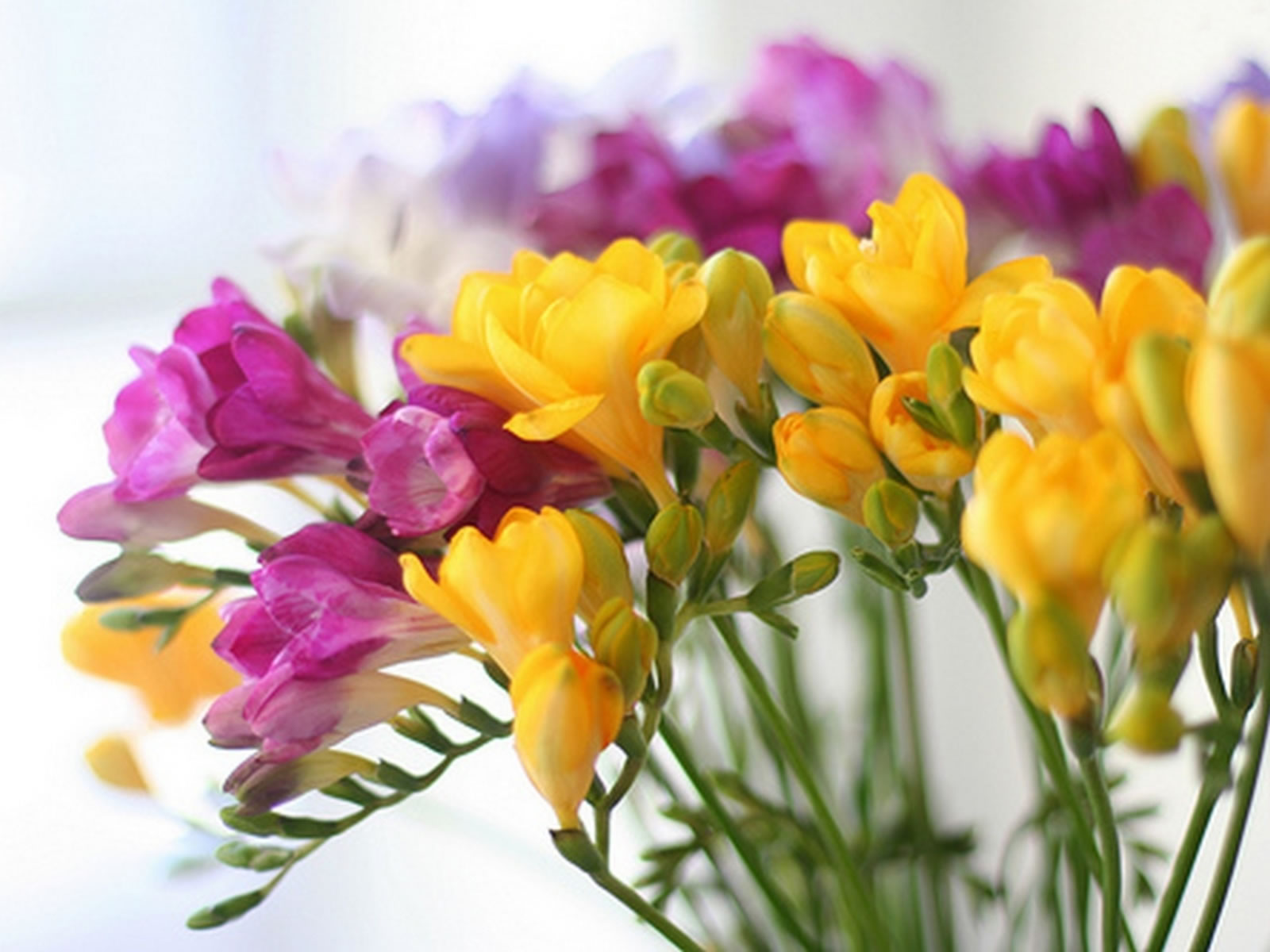
Freesia is a genus of herbaceous perennial flowering plants in the family Iridaceae, first referred to as a genus in 1866 by Chr. Fr. Echlon (1795-1868) and called after German botanist and doctor Friedrich Freese (1794-1878). It really is native to the eastern aspect of southern Africa, from Kenya south to South Africa, most species being within Cape Provinces. Types of the ex - genus Anomatheca are actually contained in Freesia. The plants often called "freesias", with fragrant funnel-shaped bouquets, are cultivated hybrids of a number of Freesia types. Some other varieties are also produced as ornamental plant life.
They are simply herbaceous vegetation which increase from a conical corm 1-2.5 cm diameter, which transmits up a tuft of slim leaves 10-30 cm long, and a sparsely branched stem 10-40 cm extra tall bearing a few leaves and a loose one-sided spike of plants with six tepals. Many varieties have fragrant narrowly funnel-shaped plants, although those previously located in the genus Anomatheca, such as F. laxa, have level flowers. Freesias are used as food plants by the larvae of some Lepidoptera varieties including Large Yellowish Underwing.
CULTIVATION AND USES
The vegetation usually called "freesias" are derived from crosses manufactured in the 19th century between F. refracta and F. leichtlinii. Numerous cultivars have been bred from these species and the pink- and yellow-flowered types of F. corymbosa. Modern tetraploid cultivars have blossoms ranging from white to yellow, green, red and blue-mauve. They are mostly cultivated expertly in holland by about 80 growers.[3] Freesias can be easily increased from seed. Because of their specific and satisfying scent, they are often used in hand products, shampoos, candles, etc.[citation needed], however, the blossoms are mainly used in wedding bouquets. They could be planted in the semester in USDA Hardiness Areas 9-10 (i.e. where the temperature does not land below about -7 ?C (20 ?F)), and in the spring in Zones 4-8.
Freesia laxa (formerly called Lapeirousia laxa or Anomatheca cruenta) is one of the other kinds of the genus which is often cultivated. Smaller than the scented freesia cultivars, it includes flat rather than cup-shaped plants. Extensive 'forcing' of the bulb occurs in Half Moon Bay in California where several growers chill the bulbs in proprietary solutions to satisfy frigid dormancy which results in formation of buds in just a predicted variety of weeks - often 5 weeks at 55 ?F (13 ?C).
Herbaceous crops (in botanical use frequently simply herbal remedies) are vegetation which may have no continual woody stem above ground. Herbaceous plants may be annuals, biennials or perennials. Annual herbaceous plants expire completely by the end of the growing season or when they have flowered and fruited, and they then expand again from seed. Herbaceous perennial and biennial crops may have stems that die by the end of the growing season, but elements of the plant make it through under or near to the ground from season to season (for biennials, until the next growing season, when they bloom and die). New development produces from living tissue staying on or under the bottom, including root base, a caudex (a thickened part of the stem at ground level) or numerous kinds of underground stems, such as light bulbs, corms, stolons, rhizomes and tubers. Examples of herbaceous biennials include carrot, parsnip and common ragwort; herbaceous perennials include potato, peony, hosta, mint, most ferns & most grasses. In comparison, non-herbaceous perennial crops are woody plants which have stems above earth that stay alive through the dormant season and develop shoots the next 12 months from the above-ground parts - included in these are trees and shrubs, shrubs and vines.
Freesia Garden and Flowers Pinterest

blossoms: Freesia

File:FreesiaRefracta3.JPG Wikimedia Commons
Syella: Tell a Freesia flower tattoo designs

Tidak ada komentar:
Posting Komentar